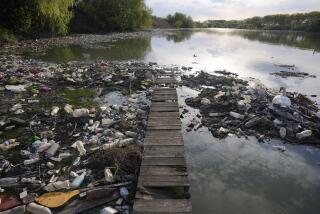Trends Indicate Some of World’s ‘Vital Signs’ Are Looking Better
- Share via
WASHINGTON — People are smoking less, countries are cutting back armies and nuclear weapons, and industry is producing less oil and fewer ozone-destroying chemicals.
Could the world be turning into a better place?
Not yet, the Worldwatch Institute said in a report Saturday. But there are encouraging trends.
A look at 36 environmental and social indicators in the report “Vital Signs” still shows trouble signs.
But “there are . . . some positive trends beginning to emerge,” said Lester R. Brown, Worldwatch’s president who co-authored the report.
Among the most disturbing trends is a worldwide slide in grain production as population continues to grow at record rates.
The world harvest in 1992 is expected to be at a five-year low of 686 pounds per person this year, Brown said.
Brown said that with the demise of the nuclear threat, population growth is now “the leading threat to our future.”
Despite worldwide declines in fertility rates, population grew by a record 92 million in 1991, with 80 million of the new arrivals living in the Third World, the report said. A new record has been set every year since 1975.
Other negative indicators include falling fish catches, rain forest depletion, reduced energy efficiency, disappearing bird species and increasing global temperatures.
The good news:
-- Cigarette smoking is down to 1,008 cigarettes per capita from a peak of 1,023 in 1988.
-- Bicycle production is outpacing car production, with 95 million bikes built in 1990, compared with 36 million cars. Nearly five times as many bikes are being built now as in the 1960s.
-- Military spending fell to $934 billion in 1990, with a further drop expected when 1991 figures are compiled. The peak in spending was the nearly $1.03 trillion in 1987.
-- Strategic nuclear stockpiles have fallen to 19,165 warheads in 1991, the lowest level in a decade after reaching 24,545 in 1988.
-- World petroleum production fell 1% in 1991 and has not regained the record output of 62.7-million barrels set in 1979. And lower-polluting natural gas has been produced at new record levels in each of the past eight years. Use of wind and solar power also is increasing dramatically.
-- Production of ozone-depleting chlorofluorocarbons has fallen 46% since the peak year in 1988.
More to Read
Sign up for Essential California
The most important California stories and recommendations in your inbox every morning.
You may occasionally receive promotional content from the Los Angeles Times.













